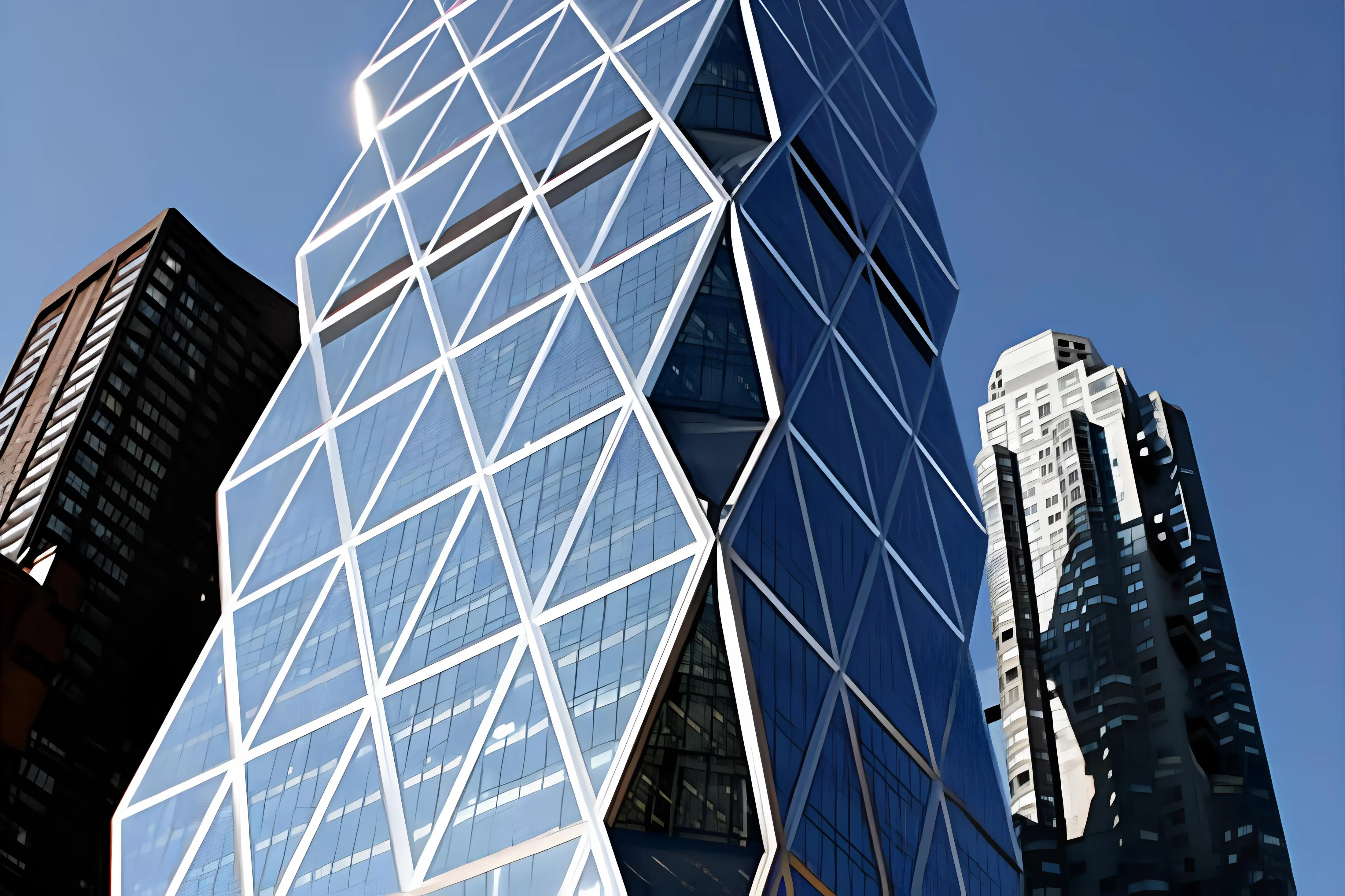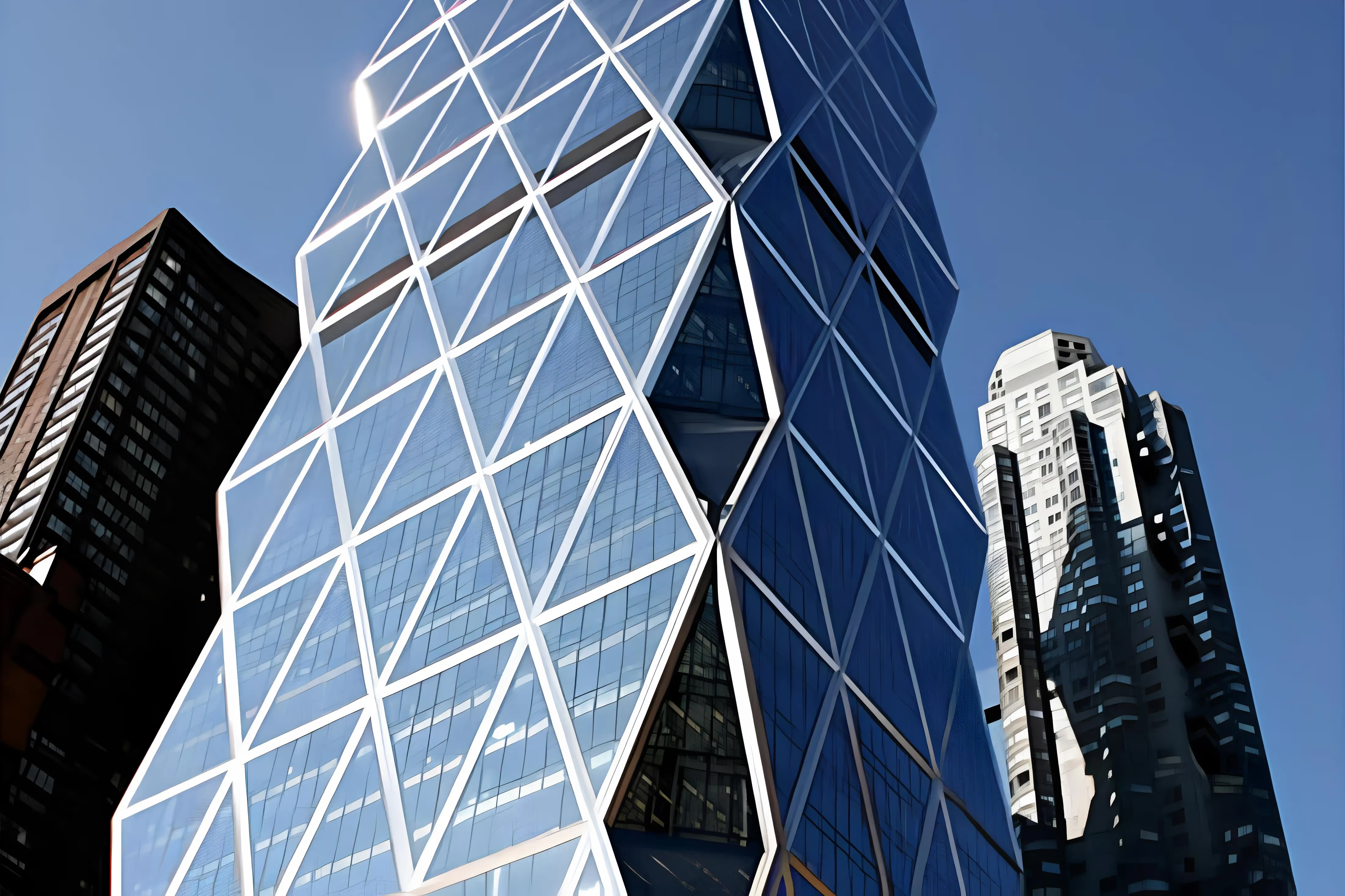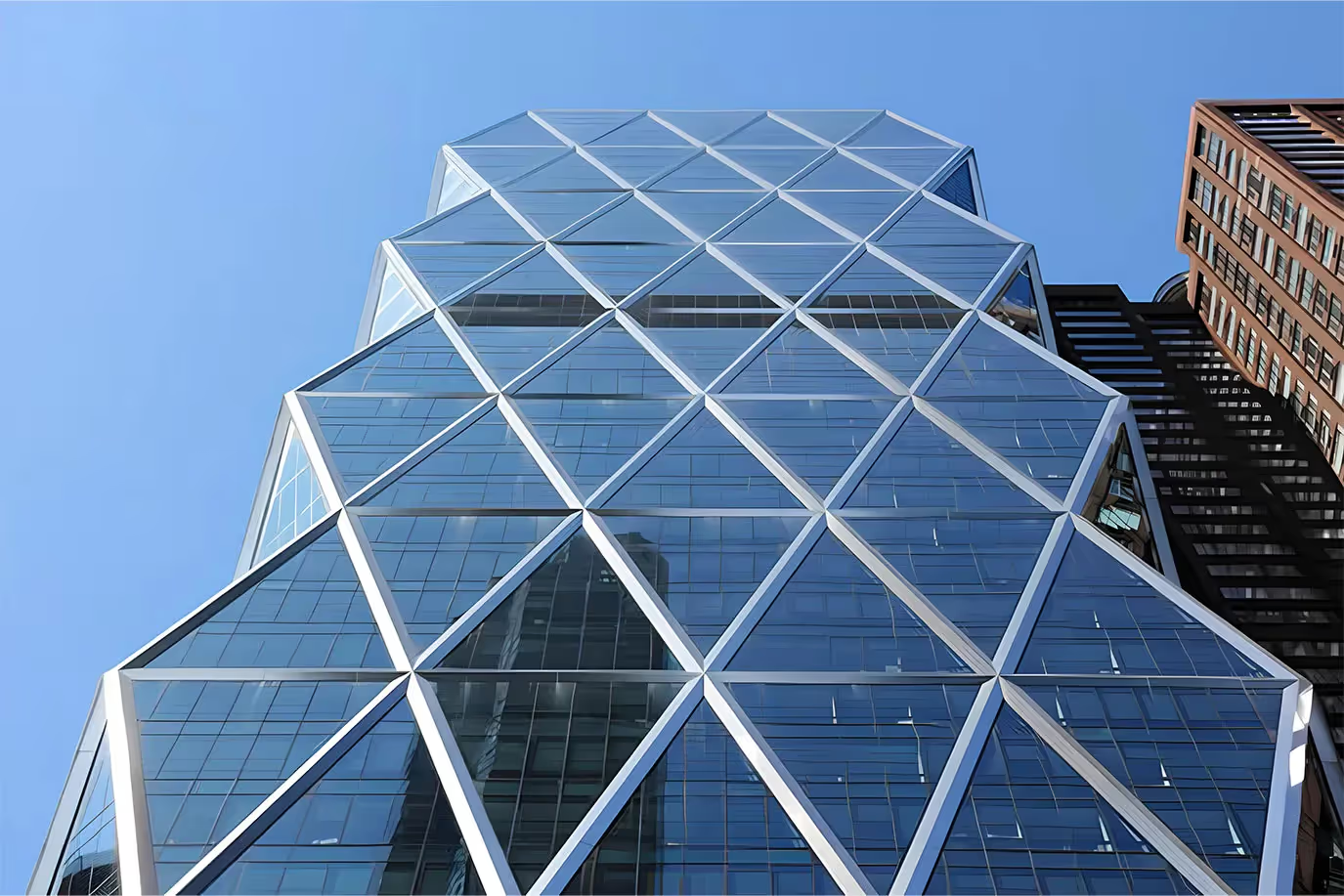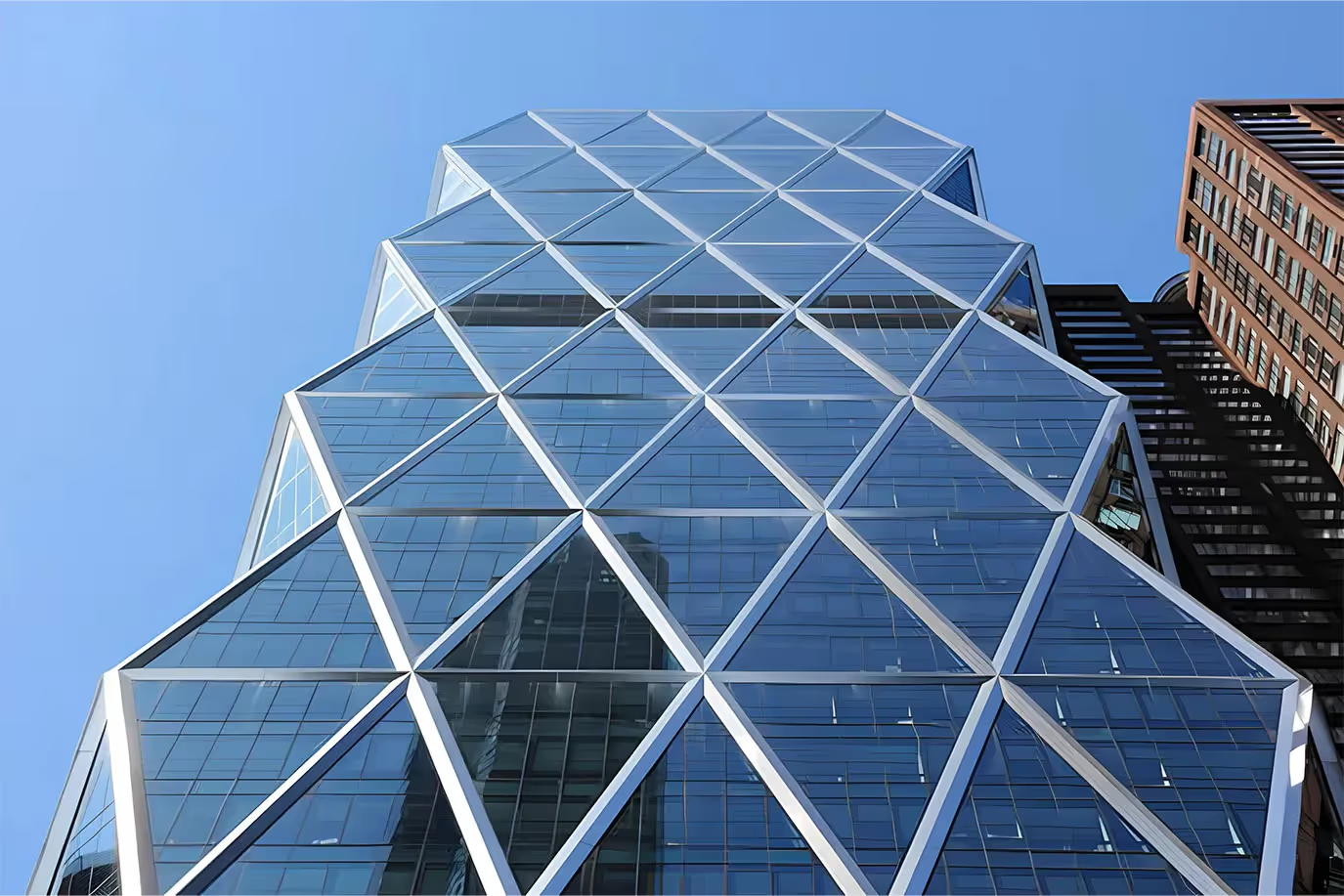What is Green Nano Architecture?
Green Nano Architecture refers to the use of nanotechnologies and nanomaterials in architecture and construction in sustainable and environmentally friendly ways. It combines two main concepts: 'Nanotechnology' and 'Green Architecture'.
Nanotechnology
The study and use of materials and systems at the nanometer scale (one millionth of a millimeter), where materials have different properties and behavior than those at larger scales. This field can give materials superior properties such as strength, thermal conductivity, response to radiation and lighting, and more.
Green Architecture
Focuses on designing and constructing buildings and structures in ways that reduce their impact on the environment and achieve sustainability. Its principles include using renewable resources, improving energy and water consumption efficiency, effective waste management, and providing a healthy and comfortable indoor environment.
When these two concepts are combined, there is a focus on using nanotechnologies to improve green architecture and increase its sustainability. This includes using nanomaterials to develop better insulation systems, improve energy efficiency, purify air and water, and reduce resource consumption.

Key Applications of Green Nano Architecture
The integration between nanotechnology and green architecture occurs through:
- Applications of sustainable nano building materials used in the architectural sector
- Aspects of nanotechnology impact on structural elements in buildings
- Aspects of integrating these materials with the sustainable building system
1. Thermal and Sound Insulation
- Using nanomaterials such as nanographene and nanofibers to improve thermal and sound insulation properties of building materials
- Developing nano coatings containing materials like silica to improve thermal insulation capability of walls and roofs
2. Smart and Reflective Glass
- Using nano coatings on glass to improve UV reflection and reduce heat entry
- Developing nano glass that can be electronically controlled to adjust transparency and reflectivity levels
3. Ultra-Efficient Solar Panels
- Using nanomaterials in designing ultra-efficient and high-performance solar panels
- Developing solar panels based on nanotechnology such as nanowires and nanoparticles to increase light absorption and improve energy conversion
4. Indoor Air Purification
- Developing nanomaterials containing purification filters for use in ventilation and air conditioning systems
- Using porous nanomaterials to absorb air pollutants and improve indoor air quality
5. Sustainable Building Materials
- Developing building materials containing nanoparticles to enhance their strength and durability
- Using nanomaterials as reinforcing agents to improve properties of existing building materials such as concrete, wood, steel, etc.
6. Energy Management
- Developing energy storage systems using nanotechnology to achieve better balance between supply and consumption
- Using nanomaterials in developing more efficient and high-performance batteries for storing renewable energy
7. Self-Cleaning Coatings
- Developing nano coatings that work as a self-cleaning protective layer, preventing dirt and stain accumulation
- Using hydrophobic nanomaterials to form a thin, transparent layer that protects and maintains building cleanliness
8. Natural Lighting and Lighting Improvement
- Developing nanomaterials that absorb and direct natural light to improve indoor lighting and reduce dependence on artificial lighting
These applications reflect the advancement of nanotechnology in green architecture and how to improve sustainability and environmental efficiency of buildings and urban communities. Integration of building materials with nanotechnology has led to improved properties and gained capabilities of more than one material at the same time, so designers no longer worry about how to build but focus on design.

Standards for Using Green Nano Architecture
Using green nano architecture includes many standards and principles that must be considered to ensure achieving sustainable performance and environmental effectiveness:
1. Sustainability
All materials and technologies used must be sustainable in terms of sources, production, and environmental impact.
2. Energy Efficiency
Nanotechnologies should contribute to improving building energy consumption efficiency through improving thermal insulation and renewable energy generation techniques.
3. Resource Management
Nanotechnologies can contribute to reducing resource consumption such as water and raw materials through developing more efficient materials.
4. Monitoring and Control
Nanotechnologies can be used to develop smart monitoring and control systems to achieve maximum benefit from energy and resources.
5. Integrated Design
Nanotechnologies must be integrated into design and construction phases comprehensively, considering their impact on structure and performance.
6. Environmental and Health Safety
The impact of using nanotechnologies on environmental and health must be assessed to ensure no environmental pollution or harmful effects on individuals.
7. Collaboration and Balance
The impact of using nanotechnologies on environmental and health must be assessed to ensure no environmental pollution or harmful effects on individuals.
8. Update and Maintenance
Planning for maintenance and updating of nanotechnologies must be done to ensure continuity of their performance and efficiency in the long term.
These are some standards and points that can be considered when using green nano architecture. These standards vary according to context and project, so they should be viewed comprehensively and based on specific project needs and conditions.
Case Study: Hearst Tower

Project Overview
A skyscraper located in Manhattan, New York, also known as One World Trade Center, part of efforts to redevelop the area after the September 11, 2001 attacks. It is considered a symbol of strength and challenge as one of the tallest towers in the world at approximately 541 meters. The tower includes commercial offices, retail spaces, and residential units.
Building Design
Designed with modern architectural style combining symbolism and modernity, also considering sustainability principles to reduce environmental impact. Many concepts and technologies were adopted in its design.
1. Advanced Technology and Security
The tower design was adapted with latest security and technological technologies and equipment. These features include advanced fire suppression systems, explosives detection systems, and sophisticated engineering systems for emergency handling.
2. Structure and Materials
Advanced materials such as fire-resistant steel and fiber-reinforced concrete were used to build the tower. These materials contribute to improving structural strength and resistance to environmental factors.
3. Nano Glass Platform
Hearst Tower contains a glass observation platform on the 100th floor providing panoramic views of New York City. Nano glass is one of the components used in this platform to improve thermal insulation and sustainability.
4. Entrances and Public Spaces
Entrances and public spaces were designed in a way that combines aesthetics and practical functions. Outdoor and indoor spaces represent places for meeting and recreation.
These features in Hearst Tower combine practical, artistic, and symbolic aspects in its design, making it a distinctive urban landmark in New York City and a symbol of resilience and renewal.


Impact on Environmental Performance
Considered one of the modern buildings that pays great attention to environmental performance and sustainability. Many environmental designs and technologies were included in the tower to preserve the environment and reduce its environmental impact. Here are some ways Hearst Tower affects environmental performance:
1. Green Building Design
Hearst Tower was designed according to green building standards, aiming to reduce energy and resource consumption and limit negative environmental impacts. Efficient cooling and heating systems were adopted in terms of energy consumption.
2. Lighting and Energy Technology
High-efficiency LED lighting technology was used in the tower, which consumes less energy compared to traditional lighting types. This reduces energy consumption and contributes to sustainability.
3. Waste Management
Effective waste management systems were implemented in the tower, aiming to recycle waste and reduce general waste accumulating in landfills.
4. Reducing Carbon Emissions
The tower was designed to be more energy-efficient, reducing greenhouse gas emissions and contributing to global efforts to combat climate change.
5. Using Sustainable Materials
Sustainable and environmentally friendly materials were chosen in tower construction. This includes using recyclable materials that reduce negative environmental impacts on nature.
These designs combine Hearst Tower with the latest environmental technologies and sustainability to contribute to environmental preservation and reduce its environmental impact. These efforts play an important role in limiting climate change impacts and promote public awareness about the importance of sustainability in buildings and large projects.
Conclusion
Green nano architecture represents a revolutionary approach to sustainable building design, combining cutting-edge nanotechnology with environmentally conscious principles. Through the integration of nanomaterials and advanced technologies, we can create buildings that are not only more efficient and durable but also significantly more sustainable. The applications of nanotechnology in green architecture, from self-cleaning surfaces to ultra-efficient solar panels and smart glass systems, demonstrate the immense potential of this field. As demonstrated by the Hearst Tower case study, these technologies are not just theoretical concepts but practical solutions being implemented in real-world projects. As we face increasing environmental challenges and the urgent need for sustainable development, green nano architecture offers a promising path forward. By continuing to invest in research and development, adopting these innovative technologies, and maintaining rigorous environmental and safety standards, we can transform the construction industry into a leading force for environmental stewardship and sustainable urban development.
